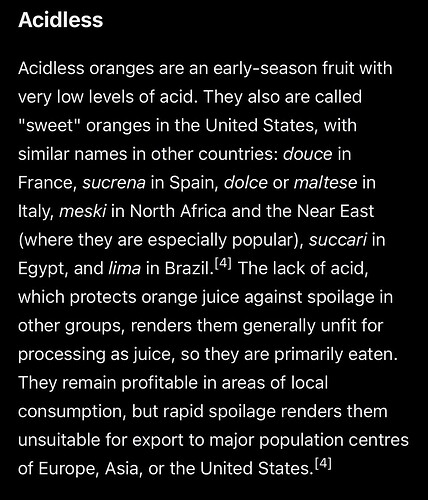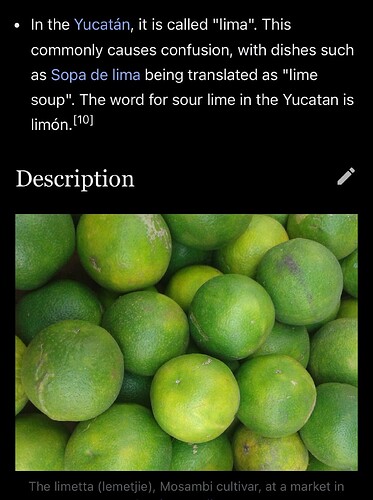I’ve been in conversation with a customer about Cuban drinks and citrus, which led me to dig, but that only got me so far. Asking for clarification/correction on the following:
Limes
The primary citrus in Cuban drinks, obviously, is limón (green lime) which the Cubans (uniquely?) sometimes (inconsistently) spell out as limón verde—an additional source of confusion. I conjecture this habit is either some local linguistic particularity that traces back to their Spanish cultural ties (where limón is a lemon and limes were uncommon, and in the same sense that a lemon is a limón amarillo, in the unlikely situation you encounter one in Latin America) or else, maybe something to do with overripe limes going yellowish and their flavor turning?
The lime cultivar, historically, is Limón Creollo (aka Key Lime), not Tahitian/Persian/Bearss. [i.e., we should be using key limes in our Cuban drinks]
In Mexico—at least—the lima is a different cultivar of lime: a small, aromatic number with seeds. (See also: sopa de lima). I haven’t found any indication this style of lime exists in Cuba, nor that the Cubans employ the word “lima” at all in the drinks context (except Naranja de Lima, below).
Oranges
The naranja (sweet orange) seems to be present in Cuba, but uncommonly employed in mixed drinks, and mainly crops up in Cuban recipes for American drinks that call for orange juice.
I suspect the oranges that were common in Cuba during the relevant period were not quite what we’re accustomed to, today, from Florida, but I don’t know.
Grapefruit
The toronja—a genuinely Caribbean citrus hybrid—crops up pretty frequently. No notes other than the Cubans were assuredly not using the fucking Ruby Red.
Naranja Lima / Naranja de Lima
This term seems to apply to either the sour orange (not necessarily the Seville, specifically) or an orange/lime hybrid. “Medicinal citrus.” Unclear to me what is common in Cuba. Rarely used in mixed drinks, but crops up in sources like Lasa (Clover Club, Jack Rose, Suave) and Sanchez (Doctor No. 1., Hop Frogg [sic], Hop Toad)

